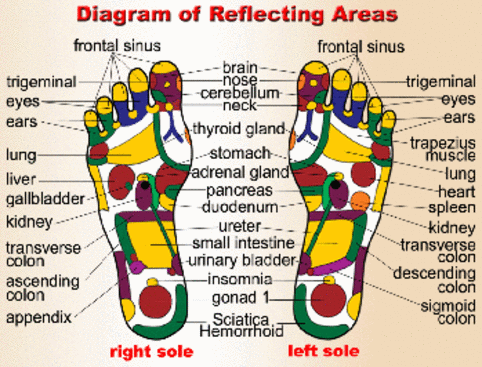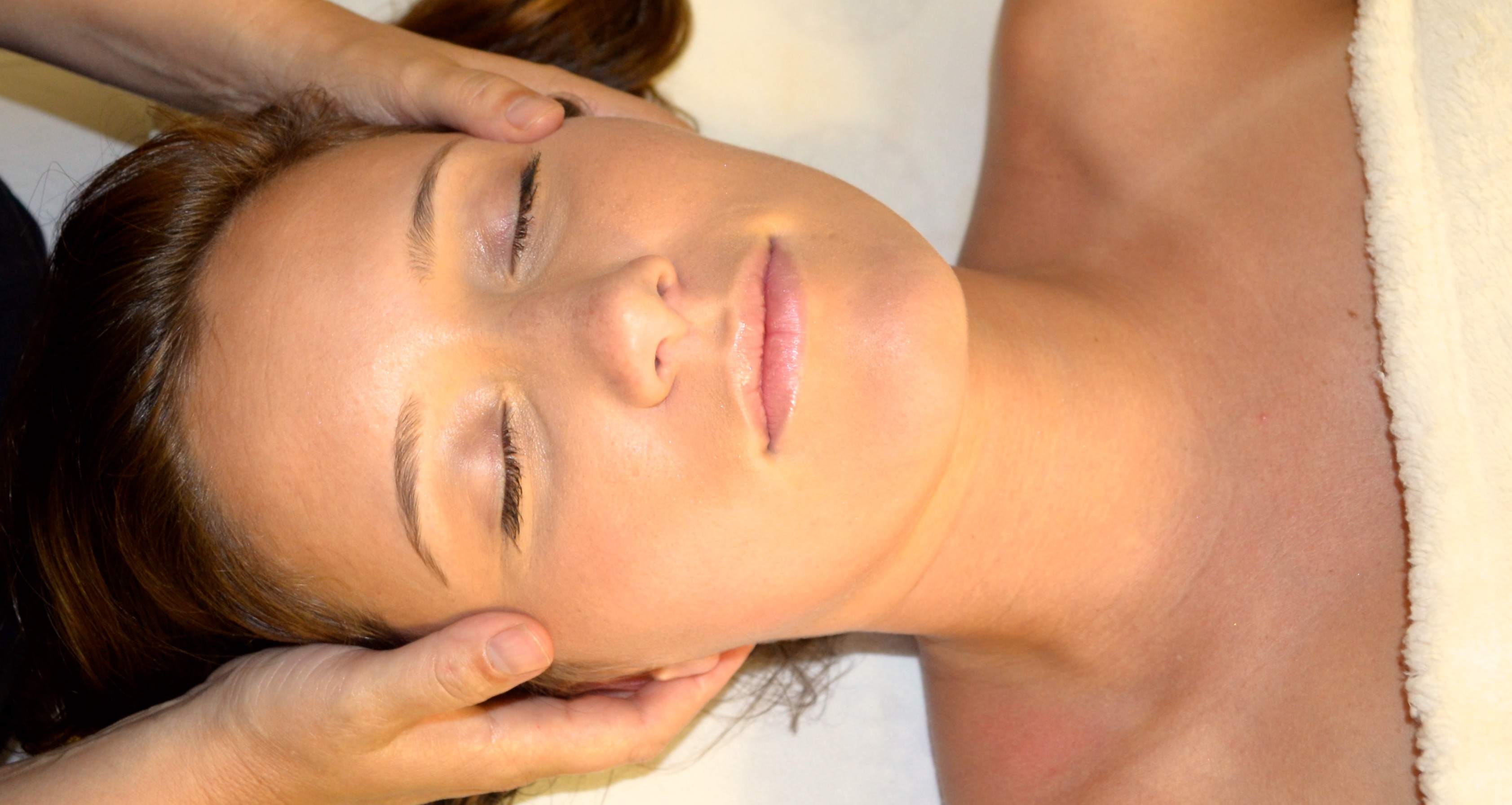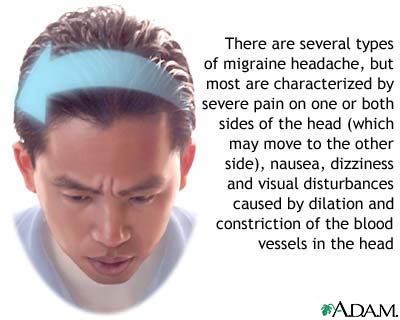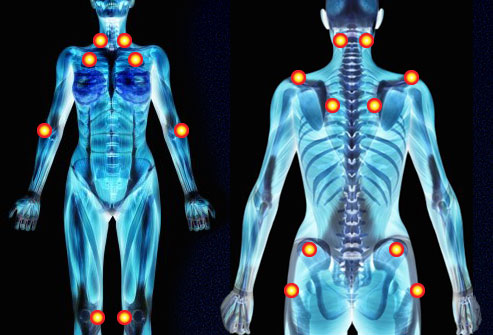
by SharonHartnett | Jun 10, 2014 | Craniosacral Therapy, Massage, Massage License in Ohio: 33.007505-H-K, mind body & spirit, Structural Integration
Have you taken the time lately to examine your feet?
Did you know that the feet are good indicators of what is going on with your overall health?
For your wellbeing, you might want to consider setting aside a little space in your schedule for some TLC to this part of your body.
As a Massage Therapist for 17 years, I have seen lots of feet. The care that people put there ranges anywhere from between a “0” up to a “10”.
Most common for the best feet- women who like to have pedicures and get their feet massaged monthly often sport around healthy feet. Believe it or not, this extra attention really shows. When your pedicurist or massage therapist work with your feet, the professional ones will let you know if they notice any unusual sores, stiffness, and personally-you will feel if there is pain by touch or certain movements. Also athletes who listen to their feet and find their center and balance also have better posture in how they stand and move through life.
I see more unhealthy feet with the elderly. Sometimes Seniors can’t reach down and touch their feet so they get neglected. In these cases, I have seen open sores, felt the lack of circulation, noticed yellowing and dryness, and ingrown nails. But there are also younger people who have issues. I have seen young women who wear high heel shoes every day and their feet lose their natural shape and then start to resemble shoes. They are no longer able to stand correctly fully on their feet which pulls the whole body out of alignment. Another issues that frequently comes up is the pain associated with Plantar fasciitis. When people don’t wear the proper shoes to support their feet, this very painful condition in which a thick band that connects the heel to the toes becomes inflamed.
So what can you do to take care of your feet?

Taking Care of Your Feet
As you can see from this reflexology chart, the feet, as is the whole body, is interconnected. People who have studied the feet in particular, or who have massaged them for years, can usually begin to correlate certain relationships. This chart can be helpful to you too in identifying any possible problems. Try practicing massage at home or receive massage by your favorite therapist and ask for particular attention to the feet. Allow yourself to become mindful and feel into the sensations… whether pleasure or pain. In the picture above, you can get an idea where you are tense and be curious about the part of the body that is associated there. Knowledge is power and understanding your body is key to your health.
If you have a challenge reaching down or visual problems seeing your feet, ask your caretaker or partner to give you some feedback. For example, if there are yellowing nails- it may be time to see your podiatrist for fungus problems. Keeping your physicians updated on any unusual conditions will help them to decide how to test you for health issues such as diabetes or neuropathy.
Make sure that you change your shoes often. From a Structural Integration perspective, walking in old worn out shoes that are already a reflection of your footstep will worsen your alignment. Different shoes support differently. That makes sense. Engage the whole foot as a whole as much as possible. Keeping your foot balanced is healthy.
Structural Integration and Massage can be great in taking care of your feet. It improves circulation, increases lymphatic flow, engages the nervous system, touches into the reflexology points, enhances flexibility and helps you to feel more grounded and at ease in your whole body. After all, your whole structure comes through your feet as you move through life. So it’s important to bring your attention to this connection of structure.
I know it can be easy to ignore the feet. Everyday they move us around, they do their job so that we forget to feel mindful. However, this is the exact reason why we should change our thinking. For longterm health- pay attention to what is working and make sure that the feet are well taken care of. Let your feet be an indicator of your overall health and wellness. You deserve happy and healthy feet!
For a link to more information on feet:
https://www.healthcentral.com/diabetes/cf/slideshows/what-your-feet-say-about-your-health?ap=825#slide=1
Warmly,
Sharon Hartnett LMT
Columbus, Ohio
(614) 372-6598

by SharonHartnett | Jun 10, 2014 | Craniosacral Therapy, Massage License in Ohio: 33.007505-H-K
Better Sleep is Possible.
Sleep problems are more common than you think. Many parents face the challenges of helping their children to get enough sleep through the night.
Young babies might wake up for feedings, early childhood issues may include separation anxiety, or perhaps the older kids have to get up at 5:30 in the morning to get ready for school. Whatever is interrupting your child’s sleep cycle needs to be addressed to stop sleep deprivation. Children need about 9 hours asleep to feel healthy throughout their day.
Some ways to address sleep issues is to:
- Make bedtime a positive experience.
- Be consistent with bedtime each night.
- Cut down on caffeine and sugars many hours before sleep.
- Eliminate TV and computer time for some quiet time before bed.
- Read until sleepy.
- Focus on relaxing activities rather than stimulation.
- Massage can reduce stress and works wonders in helping one to sleep more deeply.

Peaceful Rest
From a Craniosacral perspective, reducing stress and anxiety through CST is one of the main objectives.
This is accomplished by:
- Speaking in a gentle voice.
- Using a Very light touch
- Work within the child’s boundaries. Listening to body and vocal cues allows a therapist to honor what is needed in the moment.
- Balancing the child’s neurological system through working with the cerebrospinal fluid.
- Restoring better posture through fascial work.
- Supporting emotional release as it occurs.
- Allowing play during sessions.
Touch when done with clear intention and heart can be very relaxing and therapeutic.
Craniosacral Therapy has been successful in releasing restrictions and improving overall functioning of the mind/body/spirit connection.
If you are interested in sessions or would like to learn how to work with your child, contact Sharon Hartnett LMT for a free 15 minute telephone consultation at:
(740) 966-5153
Columbus, Ohio
www.massageincolumbusohio.com
For more information on the benefits of Massage, check out:
https://www.massagemag.com/pediatric-massage-therapy-for-autism-part-two-research-and-benefits-of-massage-therapy-for-children-with-autism-2-24015/

by SharonHartnett | May 28, 2014 | Craniosacral Therapy, Massage, Massage License in Ohio: 33.007505-H-K, Structural Integration
What is Depression?
Depression is a mood disorder that causes a persistent feeling of sadness and loss of interest. Also called major depression, major depressive disorder or clinical depression, it affects how you feel, think and behave and can lead to a variety of emotional and physical problems. You may have trouble doing normal day-to-day activities, and depression may make you feel as if life isn’t worth living.
More than just a bout of the blues, depression isn’t a weakness, nor is it something that you can simply “snap out” of. Depression may require long-term treatment. But don’t get discouraged. Most people with depression feel better with medication, psychological counseling or both. Other treatments also may help.
This is how it is defined by the Mayo Clinic with the Link right here: Mayo Clinic

massage helps create positive change.
So what are some of the “other” treatments that may support wellness?
Here is a link to the position held by the American Massage Therapy Association:
https://www.amtamassage.org/approved_position_statements/Massage-Can-Reduce-Symptoms-of-Depression.html
AMTA Consumer Survey Facts
More Americans are incorporating massage therapy into their regular health and wellness regimens to assist with medical conditions:
• 88% of individuals view massage as being beneficial to overall health and wellness
• 88% of individuals believe that massage can be effective in reducing pain
• 75% of consumers surveyed claim that their primary reason for receiving a massage was medical (43%) or stress (32%) related
• 53% of people say their doctor has recommended they get a massage
In recent studies, Massage, which includes touching and working with the soft tissues of the body, has been shown to reduce stress and also take the edge off of depression. These effects are due primarily to the parasympathetic and hormonal levels shifting to reduce stress and anxiety. While massage and bodywork does not cure depression, these changes do help clients to better cope in day to day life.
For people who are feeling alone and disconnected from life, reaching out and finding the right type of therapy may be helpful for you. Intimate massage touch and skill can help you feel rejuvenated and more open to life.
Clients often leave their massage sessions feeling happier and more relaxed.
At Lighten Up Therapies in Columbus, Ohio, we offer three main modalities of bodywork:
-
Craniosacral Therapy
-
Structural Integration
-
Reiki and Brennan Healing Science
Each of these techniques holds the client in confidentiality, sacred listening, and with an intention to help you to reconnect to your health and wellbeing.
If you have any questions,
please contact: Sharon Hartnett LMT 740 966-5153
www.massageincolumbusohio.com

by SharonHartnett | May 28, 2014 | Craniosacral Therapy
How do you find a Craniosacral Therapist in Ohio?
Well first you might have to try and figure out how to spell it correctly. Craniosacral Therapy is now becoming more well known and widespread, but many people haven’t used this term much until recently with the growing education during the last few years. So if you don’t know how to spell it, just do your best, and most likely, you’ll find a practitioner near you! Maybe that is how you found this page.
Who might benefit from working with a Craniosacral Therapist?
- Looking for a a relief from tension, pain and compression?
- If you are longing for a holistic approach to healing through the mind, body and spirit connection.
- A desire to strengthen your alignment and create a healthier lifestyle full of balance and vitality
Craniosacral Therapy provides benefits for the following conditions:
- Migraines and Headaches
- Chronic Neck and Back Pain
- Autism
- Stress and Tension-Related Disorders
- Motor-Coordination Impairments
- Infant and Childhood Disorders
- Brain and Spinal Cord Injuries
- Chronic Fatigue
- Fibromyalgia
- TMJ Syndrome
- Scoliosis
- Central Nervous System Disorders
- Learning Disabilities
- ADD/ADHD
- Post-Traumatic Stress Disorder
- Orthopedic Problems
- And Many Other Conditions

What is Craniosacral Massage?
Because Craniosacral is a light touch massage therapy, it’s gentleness can be used to help almost every person from babies… to seniors.
Sharon Hartnett LMT
www.massageincolumbusohio.com
(740) 966-5153

by SharonHartnett | May 21, 2014 | Craniosacral Therapy
Over 25 million Americans suffer from migraine headaches.
How do these people function in their daily lives with debilitating pain? What happens in their jobs, their home lives and their social lives?
It’s a Challenge!
Migraines can feel like throbbing pain. People often express a sensitivity to light, sounds and other stimuli. They can experience auras and feel numbness in the body. They can become nauseous and unable to do much of anything.
So what can help relieve Migraine Headaches?
Current research has found that dilation and constriction of blood vessels in the brain is the main culprit in causing migraine headaches and reactions. Also, women can experience migraines after the onset of her first menstruation with its fluctuations of hormones. Doctors have not been able to find a sure cure for migraines, but they have come up with an integrative approach to treat and diminish symptoms. Some of the things you can do:
-
Keep a journal of foods and other triggers when the migraine comes on.
-
Share information with your physician.
-
Medications may helpful before and after.
-
Preventative herbs have been found to reduce occurrences. Speak with a professional.
-
Complementary service such as Craniosacral Therapy, Acupuncture or hypnotherapy.
-
Aromatherapy
-
Lifestyle Changes
-
Finding ways to quiet stress such as mediation.

migraine relief
A Craniosacral Approach to Migraines
While migraines are still somewhat puzzling to the medical community, the Craniosacral approach has found some success, especially when used in combination with the above. The reason why Craniosacral can be helpful is because it is focused on the brain, spine and surrounding membranes. The intention is to reduce stress and to relieve any nerve compression or break in nerve conductivity found along the spine and the brain. The Craniosacral Therapist monitors the cerebrospinal fluid movements and takes corrective measure to help the body to self- adjust in a gentle and balanced manner. While there are no boney adjustments, when symmetry and amplitude are improved in movement occurs, it is possible too that nerves and blood vessels can be released from restrictive patterns. Flow and internal dialogue can shift things dramatically.
Because there is no sure cure for migraines, it is best to go on a journey of self-discovery of what works best for you. With the Craniosacral work, it could take one to ten sessions to find if this is the treatment for you.
If you have any questions, please contact:
Sharon Hartnett LMT, CST, SI
Columbus, Ohio
(614) 372-6598
or read the following link from the Mayo Clinic:

by SharonHartnett | May 19, 2014 | Craniosacral Therapy
What is Fibromyalgia?
In basic terms, fibromyalgia is a chronic overstimulated nerve condition that includes general pain and tenderness across the body. Over 5.8 million people in the United States are diagnosed with fibromyalgia, mostly women.
What are the symptoms of fibromyalgia?
If you are experiencing any of the below symptoms, it is wise to consult a physician:
- Aching all over, often with specific points more painful than others.
- Chronic fatigue
- Swelling
- Depression
- Anxiety
- Difficulty Sleeping
- Brain Fog
- Headaches
- Incontinence
- Abdominal Pain
- Stiffness
These symptoms can often be overlooked because of their similarities to autoimmune, hypothyroidism and other disease processes. So it is important to get tested. Take time to write down your observations and experience so that you can share this with your doctor.
For people wanting to include an integrative protocol to improve their health while diagnosed with fibromyalgia, read the below studies on how Craniosacral Therapy works and its associated benefits.
Common trigger Points found to diagnose Fibromyalgia:

Helping to Relieve Symptoms of Fibromyalgia.
Craniosacral Therapy has shown good results in helping clients to feel better overall, relieve stress and pain conditions, and to find a better outlook in life. It is a very gentle approach to healing and wellness that can be applied to almost everyone.
If you would like to find a Craniosacral Therapist in your area, please check the Upledger Site to give you a list of therapist in your area. Check for Certification and Advanced work to find the most experienced and qualified person for you.
Don’t let fibromyalgia interrupt your daily joys and activities!
Sharon Hartnett, LMT, CST
(740) 966-5153
Columbus, Ohio






